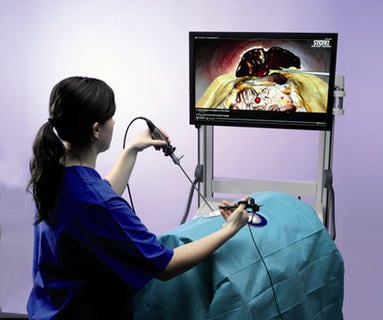A recent report put together by the Knight Foundation in collaboration with the USA TODAY NETWORK explores the use of virtual reality as a medium for storytelling. The report titled “Viewing the Future? Virtual Reality in Journalism” chronicles the rising use of virtual reality in journalism as a way engage and hold on to audiences. It also surveys established news organizations, catalogs projects, provides a review of existing studies, and introduces research into the mix.
Pinpointing 2016 as a critical year for virtual reality in news, the report addresses issues such as the possibilities of large-scale adoption of virtual reality and issues such as costs, accessibility, production difficulties, and ethical concerns.
Notably, the report includes a study of the broader virtual and augmented reality marketplace and how journalism fits into it. Findings indicate heightened interest in virtual reality at Google, Microsoft, Facebook, and industries such as retail, education, sports, and health care. The reasons for that are obvious and need no amplification.

The report makes some important observations:
- Virtual reality journalism has growth potential as tests show audiences like the effect of being closer to reported events and news stories.
- Limited accessibility to viewers interferes with adoption. Newsrooms have made efforts to distribute headsets and encourage use, but people still want fast and easy ways to devour news.
- Few virtual reality experiences have attracted advertising, i.e., whether virtual reality can be monetized or not is the unknown variable.
- Ethical questions: How does the journalist fit into the scene he or she is creating? Can virtual reality create misleading experiences? How is a subject’s privacy protected? (These are not difficult to answer)
- Virtual reality is expensive to produce.
Let’s look at these observations in order. First, virtual reality has the potential to grow and will infiltrate the media on a significant scale. As history teaches, consumers embrace just about anything different these days. Enhanced reality, making reality more or less than it really is will be entertaining, enticing, and luring to most and therefore consumed.
Second, attracting viewers may be tricky, but conceptually a no brainer. What are people engaged with constantly? Hint: you see them walking around city streets (sometimes driving on major highways) face down hypnotized by these devices and often attached to them via earphones or earbuds if you prefer. That’s, right, figure out how to generate virtual reality from a smartphone and you’ve got a humongous captive audience.
Third, attracting advertisers should be easy once you’ve got a mesmerized audience. And we just did that with the smartphones above.
Fourth, a number of questions. How do journalists fit into the scenes they are creating? Unless actively involved with the situation, the journalist reports the event. He or she is a transparent observer and need not “fit into” the scene.
Can virtual reality create misleading experiences? Yes. Enhanced reality is like enhanced truth; it’s exaggeration, pro wrestling at best. Media people and journalists are currently doing just fine at “enhancing” everything from major news stories to weather reports. There is no shortage of high drama, so what’s the point here?
How is a subject’s privacy protected? Privacy? What’s that? There is little, if any, privacy now. We are all caught on video on a daily basis, our personal info is always on the verge of complete exposure, so why the concern over that which does not exist?
Virtual reality is expensive to produce. That’s the bottom line until someone develops cheaper technology, which is the norm. History shows that most popular technologies were somewhat costly when first introduced. For example, in the early days of audio recording, a small multi-track studio could cost several hundred thousand dollars to build and equip. Now, some good microphones, an interface, software, and a laptop PC with some decent speakers offers 256 tracks with all the processing and instruments of a major studio for one to two thousand dollars. Personal computer systems in the late 1980s, early 1990s could cost two to ten grand, what do they cost now? Virtual reality is too costly? Just for now, just wait!
If one were writing an e-book, fact or fiction, interfacing virtual reality with the story could be quite beneficial. For example, if one were doing a history book on 1700s sea journeys from Europe to America, a virtual reality engine could give the reader some idea of what it was really like to be on one of those old sail boats like the Mayflower or Bounty. Virtual reality could be paired with textbooks that could teach one how to work with basic hand tools or teaching medical students how to perform certain surgeries without harming the living, or mutilating a cadaver.


Using virtual reality to enhance the news? Why? If you watch just basic TV network news (CBS, NBC, ABC, etc.), almost every story has a video of what happened, if not taken by the infinite array of surveillance cameras, shot by the plethora of bystanders using the cameras in their smartphones. And the videos shown are often edited so no one gets offended by the content, or the truth. Do we need to alter news content further? Does it make for good copy?
~MD